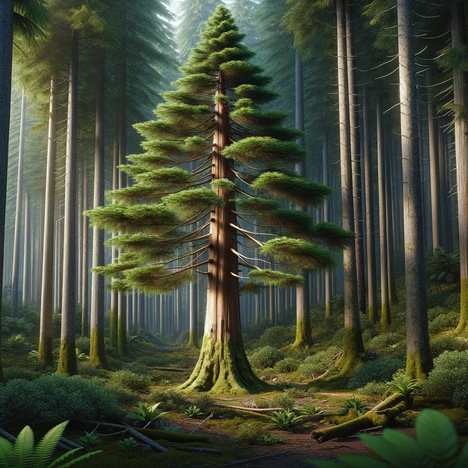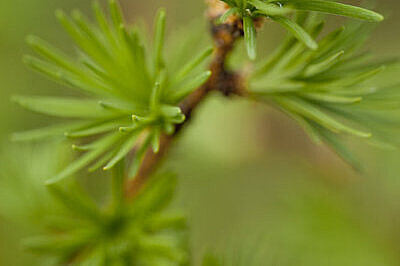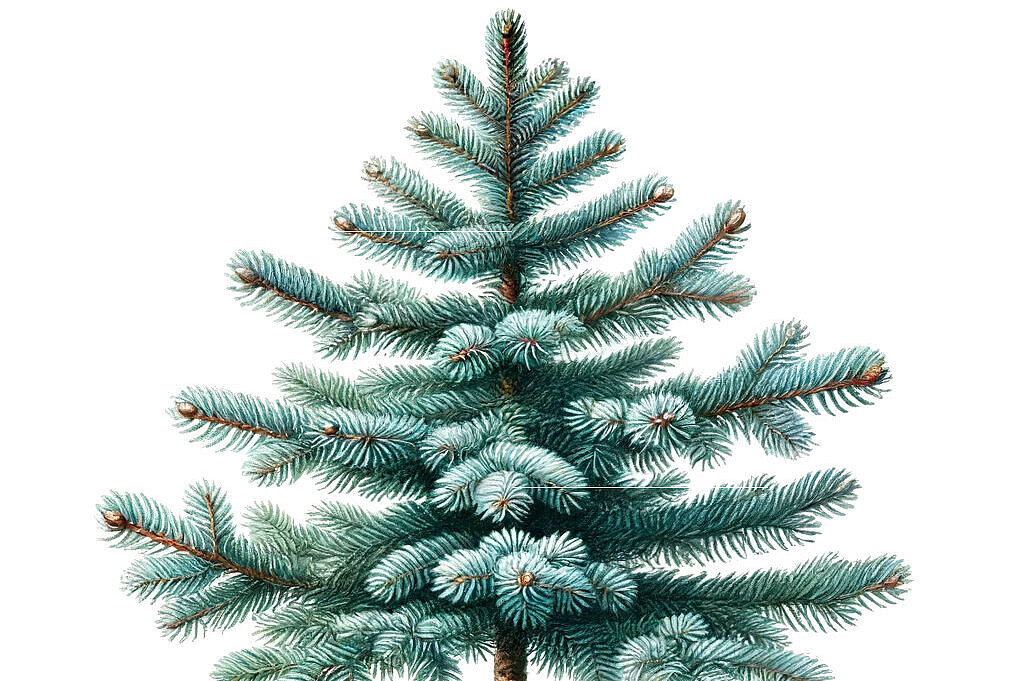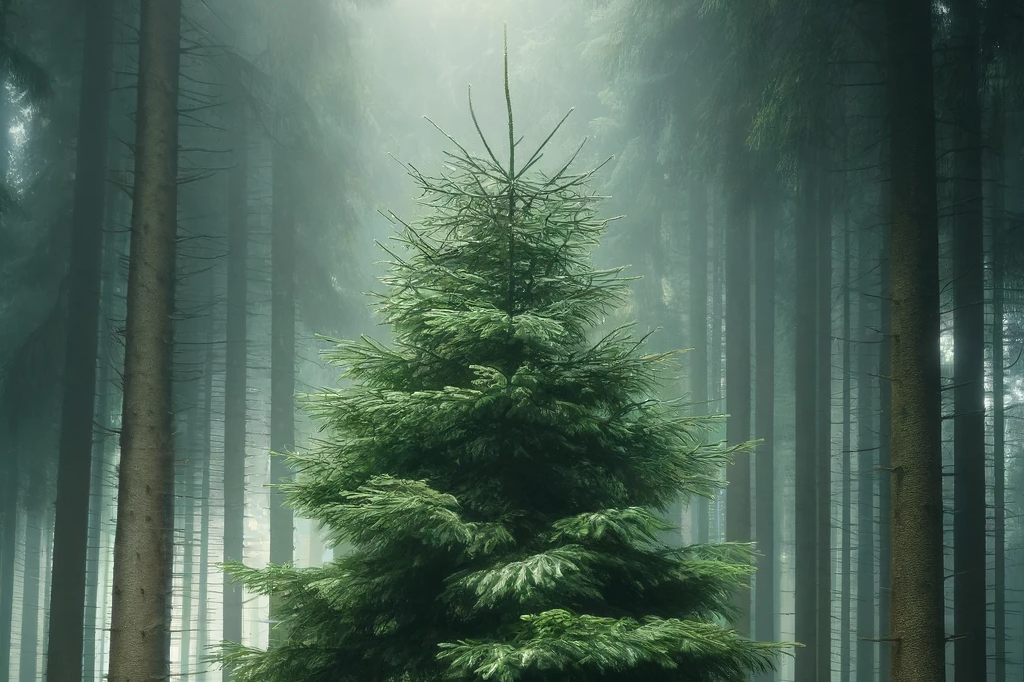Common Douglas fir

In the lush landscape of North American forests, the common Douglas fir, also known as Douglas spruce, stands as a majestic giant. Famous for its imposing height and robust wood, this tree is a source of wonder and admiration. But for dog owners, the question is: what effect does this plant have on our four-legged friends? In this article, we take a look at the common Douglas fir, its characteristics and what dog owners should know.
What is the common Douglas fir?
The common Douglas fir, scientifically known as Pseudotsuga menziesii, is a coniferous tree that is mainly found in North America. It is one of the tallest trees in the world and is known for its durable and strong wood, which is highly valued in the construction industry. With a lifespan that can span several centuries and a height that can exceed 100 meters, the Douglas fir is a truly impressive sight in any forest.
Characteristics and occurrence
The common Douglas fir is characterized by its conical crown, its thick, rough bark and its flat, soft needles, which can give off a sweet scent. The trees are mainly found in western North America, from British Columbia in Canada down to California and far into the Rocky Mountains.
Importance for the environment
The Douglas fir plays an important role in the ecosystem of its natural habitat. As part of the forest community, it contributes to biodiversity, provides habitat for numerous animal species and is an important producer of oxygen.
The common Douglas fir and dogs
The direct impact of Douglas fir on dogs is limited, as the plant itself does not contain any known toxic substances that would be dangerous to dogs in case of contact or accidental ingestion. However, there are some aspects that dog owners should consider if their dogs have access to an area with Douglas fir.
Benefits
- Natural habitat: For dogs who love the outdoors, forests of Douglas fir provide a wonderful place to explore and enjoy the fresh air.
- Shade and cooling: In the summer, these large trees can provide shade and a cool shelter.
Disadvantages
- Needles and cones: Fallen needles and cones could be ingested and potentially lead to intestinal obstruction or vomiting.
- Resin: Douglas fir resin can be sticky and get caught in dogs' fur, causing discomfort and possible skin irritation.
While the common Douglas fir does not pose a direct threat to dogs, it is important that dog owners keep an eye on their pets and make sure they do not eat anything that could harm them. As with any foray into the outdoors, caution is required to ensure that both the dog and the natural environment are protected. The Common Douglas Fir remains a symbol of strength and natural beauty, and with proper care, dogs can safely play and explore in its majestic presence.
If you notice any signs of hypersensitivity or poisoning in your dog, you should see your vet immediately. We are not a substitute for a vet, but we try to be as accurate as possible. Every dog reacts differently and we recommend you get a second opinion or consult your vet if in doubt.
Stay healthy and take good care of your four-legged friend!😊
Similar to Common Douglas fir
Larch is a tree that can grow up to 50 meters high. It has reddish-brown bark and long, soft needles that grow in clusters. In spring it produces small cones, which can be male or female. The male...
The Sitka spruce (Picea sitchensis) is remarkable not only for its impressive height and robust growth, but also for its many uses in the timber industry and landscaping. However, while its...
The Norway spruce, also known by its scientific name Picea pungens, is a majestic tree best known for its dense, blue-green needles and hardy nature. It is often planted in gardens and parks for its...
The Nordmann fir (Abies nordmanniana), also known as the Caucasian fir, originates from the mountainous regions of the Caucasus and Russia. It owes its popularity as a Christmas tree not only to its...



